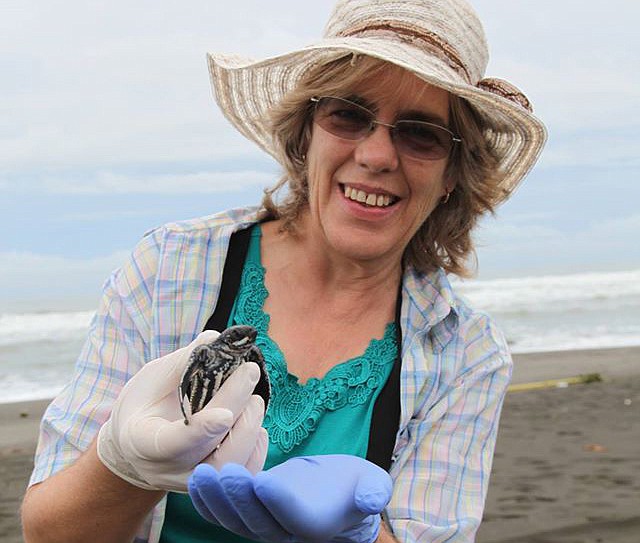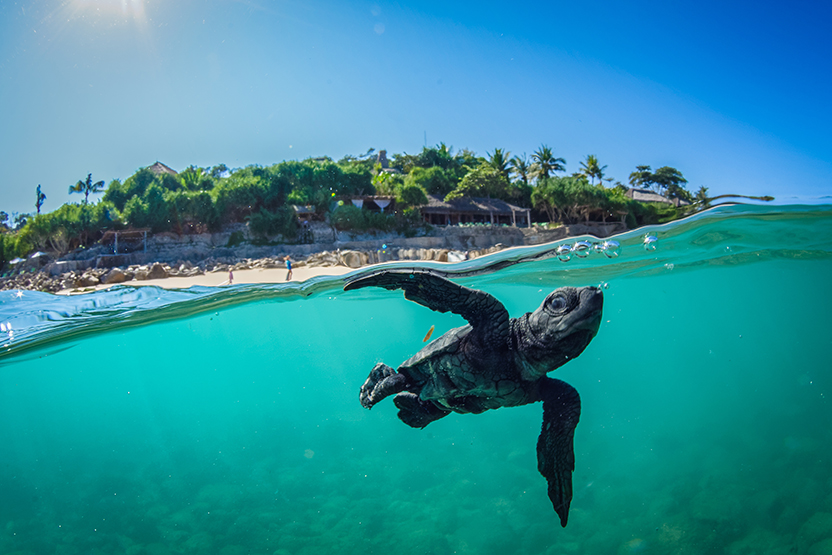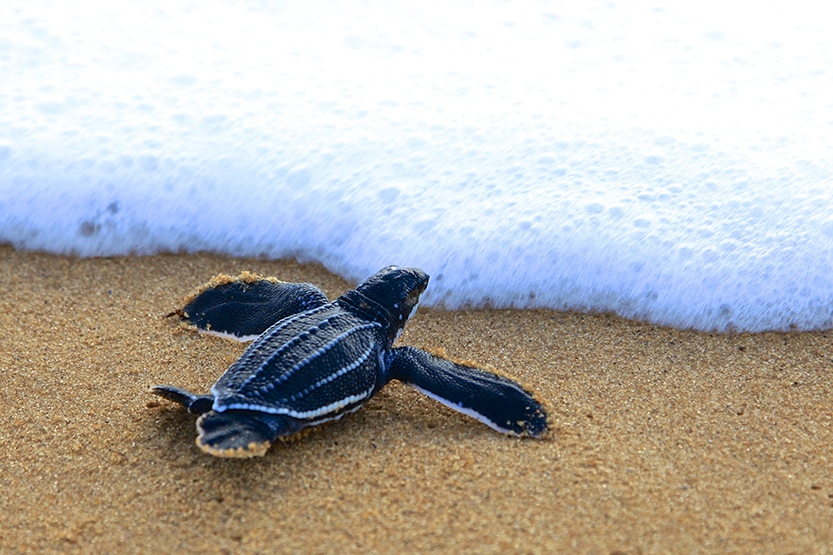GET INFO
For more informaton about ASTOP, to donate or to book dates to volunteer, visit parisminaturtles.org.questions? call Annie Steward at 423-332-4547.

Just a 15-minute boat ride away from the coast of Costa Rica sits a little island called Parismina. Home to only about 400 residents, the tiny island has a mission to make a large impact: to save its endangered turtles.
Asociación Salvemos las Tortugas de Parismina, or ASTOP, as it can more easily be referred to, has been around since 2001. It exists because of the incredible efforts of the younger generation who rallied together to become protectors of the critically endangered leatherback and hawksbill turtles and the endangered green turtles there - all of which have historically been eaten by the islanders.
The turtles visit the beaches of Barre del Parismina each year to lay their eggs between March and October. So far, a combination of ASTOP employees and numerous volunteers who go to the island to patrol the beach every night have brought the poaching rate for green turtles and their nests down from 98 percent to less than 38 percent.
One such volunteer, Soddy-Daisy resident Annie Steward, never expected to fall in love with the island the way that she did. However, the experience was so moving that she's already planning her second "volunteer vacation" for the beginning of May. And, she says, she's hoping to inspire others to come with her.
From the moment of her first arrival to Parismina from Costa Rica last year, Steward says she was hooked.
"We didn't even get off at the dock, we got off in her backyard," she says, referring to the host she stayed with while volunteering with ASTOP. "We just got off, waded through the water and ended up in her yard."
Once there, Steward lived in a room for a week with the host family, who would walk her across the island to the ASTOP facility for her nightly 4-hour beach patrol. Patrolers work in teams and serve two purposes: to deter poachers who might also be tempted to walk the beach in search of the turtles, and to watch where the turtles lay eggs so the eggs can be reburied at the sanctuary's guarded location, assuring their safekeeping, Steward says. Once eggs hatch, the hatchlings are released into the ocean.
"This time, I'm going to get a cellphone so they can call me when they're hatching and I can run down to see the releases," she says of the baby turtles' release, which happens approximately every few days with all of the nests ASTOP maintains.
The only moment that gave her pause, she says, was the moment she realized her guide for her nightly patrol was carrying a machete - but, it turned out, not for the purpose she'd envisioned. Any would-be poachers were merely asked to leave. It was the vegetation that got hacked.
"The machete was actually just useful because when you're walking, it's hot, it's humid and you get thirsty," Steward says, explaining that the machete was used to lop the tops off coconuts to reveal the water within. "It had nothing to do with protecting us."
After 10 days of volunteer work and life on the island, Steward says she was more convinced than ever to return. Because although larger turtle sanctuaries, such as the nearby Pacuare Nature Reserve in Costa Rica, receive funding, smaller islands such as Parismina lack the resources for extensive outreach. But, she says, that is exactly what makes the Parismina experience such a beautiful one.
"You walk down this beach and it's a pounding ocean, a rough ocean," says Steward. "And you've got this moon, with this moon path that kind of follows you. And every night except for one you've got this thunderstorm, but way off and just lightning flicking off the horizon and a billion stars. Then you've got the jungle right there. You're walking down this island - this little piece of land - and it's just amazing.
"It was awesome, and I mean that word with all, all of its power. It was just absolutely amazing. And then the turtles come up."
Travel, lodging and food combined cost roughly $1,200, she says. And the amount spent for food and lodging goes directly back to the island community and the turtles.
"Every time you save a turtle or their eggs you're actually making a difference in the world," Steward says. "Someone asked me, 'Why turtles? Why not kids?' you know, or something else. But to me it's all the same. Because once the turtles go, something else goes, then something else and something else, and if we don't feed the turtles, one day it won't make a difference because there's nothing left for the kids."


